This article was written by an American, Barth Suretsky. His observations are interesting and his comments about our culture and his respect and love of the Philippines are nicely written. Due to the worsening situation in our country, let's hope this will make an impact on other Filipinos who read it...
BE PROUD TO BE A FILIPINO
My decision to move to Manila was not a precipitous one. I used to work in New York as an outside agent for PAL, and have been coming to the Philippines since August, 1982. I was so impressed with the country, and with the interesting people I met, some of which have become very close friends to this day, that I asked for and was granted a year's sabbatical from my teaching job in order to live in the Philippines. I arrived here on August 21, 1983, several hours after Ninoy Aquino was shot, and remained here until June of 1984.
During that year I visited many parts of the country, from as far north as Laoag to as far south as Zamboanga, and including Palawan. I became deeply immersed in the history and culture of the archipelago, and an avid collector of tribal antiquities from both northern Luzon, and Mindanao.
In subsequent years I visited the Philippines in 1985, 1987, and 1991, before deciding to move here permanently in 1998. I love this country, but not uncritically, and that is the purpose of this article. First, however, I will say that I would not consider living anywhere else in Asia, no matter how attractive certain aspects of other neighboring countries may be. To begin with, and this is most important, with all its faults, the Philippines is still a democracy, more so than any other nation in Southeast Asia.
Despite gross corruption, the legal system generally works, and if ever confronted with having to employ it, I would feel much more safe trusting the courts here than in any other place in the surrounding area. The press here is unquestionably the most unfettered and freewheeling in Asia, and I do not believe that is hyperbole in any way! And if any one thing can be used as a yardstick to measure the extent of the democratic process in any given country in the world, it is the extent to which the press is free.
But the Philippines is a flawed democracy nevertheless, and the flaws are deeply rooted in the Philippine psyche. I will elaborate... The basic problem seems to me, after many years of observation, to be a national inferiority complex, a disturbing lack of pride in being Filipino.
Toward the end of April I spent eight days in Vietnam, visiting Hanoi, Hue, and Ho Chi Minh City. I am certainly no expert on Vietnam, but what I saw could not be denied: I saw a country ravaged as no other country has been in this century by thirty years of continuous and incredibly barbaric warfare. When the Vietnam War ended in April, 1975, the country was totally devastated. Yet in the past twenty-five years the nation has healed and rebuilt itself almost miraculously!
The countryside has been replanted and reforested. Hanoi and HCMC have been beautifully restored. The opera house in Hanoi is a splendid restoration of the original, modeled after the Opera in Paris, and the gorgeous Second Empire theater, on the main square of HCMC is as it was when built by the French a century ago. The streets are tree-lined, clean, and conducive for strolling. Cafes in the French style proliferate on the wide boulevards of HCMC. I am not praising the government of Vietnam, which still has a long way to travel on the road to democracy, but I do praise, and praise unstintingly, the pride of the Vietnamese people. It is due to this pride in being Vietnamese that has enabled its citizenry to undertake the miracle of restoration that I have described above. When I returned to Manila I became so depressed that I was actually physically ill for days thereafter. Why?
Well, let's go back to a period when the Philippines resembled the Vietnam of 1975. It was 1945, the end of World War II, and Manila, as well as many other cities, lay in ruins. (As a matter of fact, it maynot be generally known, but Manila was the second most destroyed city in the entire war; only Warsaw was more demolished!) But to compare Manila in 1970, twenty-five years after the end of the war, with HCMC, twenty-five years after the end of its war, is a sad exercise indeed. Far from restoring the city to its former glory, by 1970 Manila was well on its way to being the most tawdry city in Southeast Asia. And since that time the situation has deteriorated alarmingly. We have a city full of street people, beggars, and squatters. We have a city that floods sections whenever there is a rainstorm, and that loses electricity with every clap of thunder. We have a city full of potholes, and on these un-repaired roads we have a traffic situation second to none in the world for sheer unmanageability. We have rude drivers, taxis that routinely refuse to take passengers because of "many trapik!" The roads are also cursed with pollution-spewing buses in disreputable states of repair, and that ultimate anachronism, the jeepney! We have an educational system that allows children to attend schools without desks or books to accommodate them. Teachers, even college professors, are paid salaries so disgracefully low that it's a wonder that anyone would want to go into the teaching profession in the first place. We have a war in Mindanao that nobody seems to have a clue how to settle. The only policy to deal with the war seems to be to react to what happens daily, with no long range plan whatever. I could go on and on, but it is an endeavor so filled with futility that it hurts me to go on. It hurts me because, in spite of everything, I love the Philippines.
Maybe it will sound simplistic, but to go back to what I said above, it is my unshakable belief that the fundamental thing wrong with this country is a lack of pride in being Filipino. A friend once remarked
to me, laconically: "All Filipinos want to be something else. The poor ones want to be American, and the rich ones all want to be Spaniards. Nobody wants to be Filipino." That statement would appear to be a rather simplistic one, and perhaps it is. However, I know one Filipino who refuses to enter a theater until the national anthem has stopped being played because he doesn't want to honor his own country, and I know another one who thinks that history stopped dead in 1898 when the Spaniards departed! While it is certainly true that these represent extreme examples of national denial, the truth is not a pretty picture. Filipinos tend to worship, almost slavishly, everything foreign. If it comes from Italy or France it has to be better than anything made here. If the idea is American or German it has to be superior to anything that Filipinos can think up for themselves. Foreigners are looked up to and idolized. Foreigners can go anywhere without question. In my own personal experience I remember attending recently an affair at a major museum here. I had forgotten to bring my invitation. But while Filipinos entering the museum were checked for invitations, I was simply waived through.
This sort of thing happens so often here that it just accepted routine. All of these things, the illogical respect given to foreigners simply because they are not Filipinos, the distrust and even disrespect shown to any homegrown merchandise, the neglect of anything Philippine, the rudeness of taxi drivers, the ill-manners shown by many Filipinos are all symptomatic of a lack of self-love, of respect for and love of the country in which they were born, and worst of all, a static mind-set in regard to finding ways to improve the situation.
Most Filipinos, when confronted with evidence of governmental corruption, political chicanery, or gross exploitation on the part of the business community, simply shrug their shoulders, mutter "bahala na," and let it go at that. It is an oversimplification to say this, but it is not without a grain of truth to say that Filipinos feel downtrodden because they allow themselves to feel downtrodden. No pride. One of the most egregious examples of this lack of pride, this uncaring attitude to their own past or past culture, is the wretched state of surviving architectural landmarks in Manila and elsewhere.During the American period many beautiful and imposing buildings were built, in what we now call the "art deco" style (although, incidentally, that was not a contemporary term; it was coined only in
the 1960s). These were beautiful edifices, mostly erected during, or just before, the Commonwealth period. Three, which are still standing, are the Jai Alai Building, the Metropolitan Theater, and the Rizal Stadium. Fortunately, due to the truly noble efforts of my friend John Silva, the Jai Alai Building will now be saved. But unless something is done to the most beautiful and original of these three masterpieces of pre-war Philippine architecture, the Metropolitan Theater, it will disintegrate. The Rizal Stadium is in equally wretched shape. When the wreckers' ball destroyed Frank Lloyd Wright's Imperial Hotel in Tokyo, and New York City's most magnificent building, Pennsylvania Station, both in 1963, Ada Louise Huxtable, then the architectural critic of The New York Times, wrote:
"A disposable culture loses the right to call itself a civilization at all!" How right she was! (Fortunately, the destruction of Pennsylvania Station proved to be the sacrificial catalyst that resulted in the creation of New York's Landmark Commission. Would that such a commission be created for Manila...)
Are there historical reasons for this lack of national pride? We can say that until the arrival of the Spaniards there was no sense of a unified archipelago constituted as one country. True. We can also say that the high cultures of other nations in the region seemed, unfortunately, to have bypassed the Philippines; there are no Angkors, no Ayuttayas, no Borobudurs. True. Centuries of contact with the high cultures" of the Khmers and the Chinese had, except for the proliferation of Song dynasty pottery found throughout the archipelago, no noticeable effect. True. But all that aside, what was here? To begin with, the ancient rice terraces, now threatened with disintegration, incidentally, was an incredible feat of engineering for so-called "primitive" people. As a matter of fact, when I first saw them in 1984, I was almost as awe-stricken as I was when I first laid eyes on the astonishing Inca city of Machu Picchu, high in the
Peruvian Andes. The degree of artistry exhibited by the various tribes of the cordillera of Luzon is testimony to a remarkable culture, second to none in the Southeast Asian region. As for Mindanao, at the other end of the archipelago, an equally high degree of artistry has been manifest for centuries in woodcarving, weaving and metalwork. However, the most shocking aspect of this lack of national pride, even identity, endemic in the average Filipino, is the appalling ignorance of the history of the archipelago since unified by Spain and named Filipinas. The remarkable stories concerning the Galleon de Manila, the courageous repulsion of Dutch and British invaders from the 16th through the 18th centuries, even the origins of the Independence movement of the late 19th century, are hardly known by the average Filipino in any meaningful way. And thanks to fifty years of American brainwashing, it is few and far between the number of Filipinos who really know - or even care - about the duplicity employed by the
Americans and Spaniards to sell out and make meaningless the very independent state that Aguinaldo declared on June 12, 1898. A people without a sense of history is a people doomed to be unaware of their own identity. It is sad to say, but true, that the vast majority of Filipinos fall category. Without a sense of who you are how can you possibly take any pride in who you are?
These are not oversimplifications. On the contrary, these are the root problems of the Philippine inferiority complex referred to above. Until the Filipino takes pride in being Filipino these ills of the soul will never be cured.If what I have written here can help, even in the smallest way, to make the Filipino aware of just who he is, who he was, and who he can be, I will be one happy expat indeed!
---
Thanks to Liz Medina for sharing this.
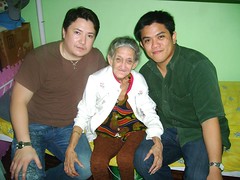 [/caption]
[/caption]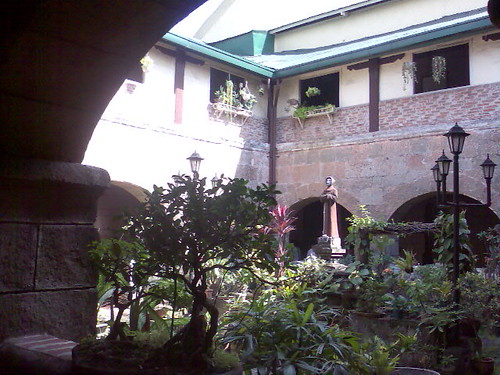
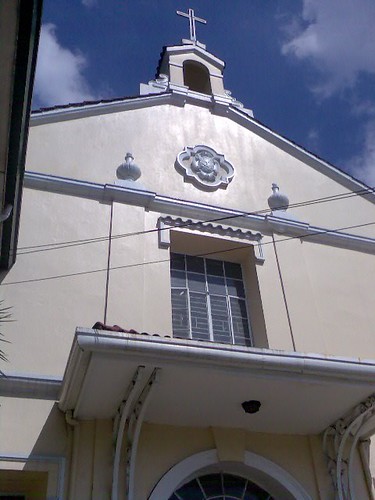
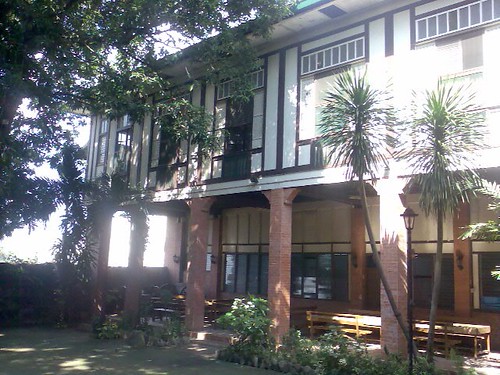
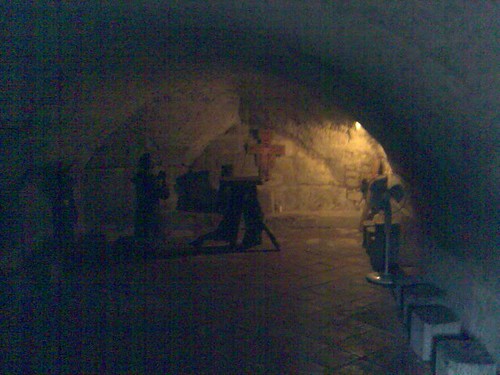
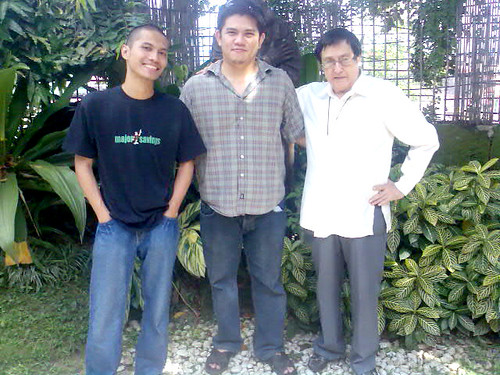
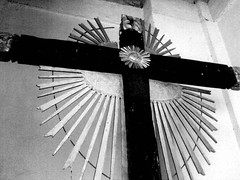 [/caption]
[/caption]

